Coolfood Pledge health care signatories are racing toward the finish line – and several hospitals and health systems have already met or even surpassed the goal of 38% per plate greenhouse gas (GHG) reduction.
Early adopters to the pledge, a cohort of 15 hospitals, have reduced their GHG emissions per plate by an average of 31.33%.
Globally, all health care signatories have achieved an average of 20.5% per plate reduction, and U.S. hospitals are about halfway to the goal with a 15.7% average reduction.
of
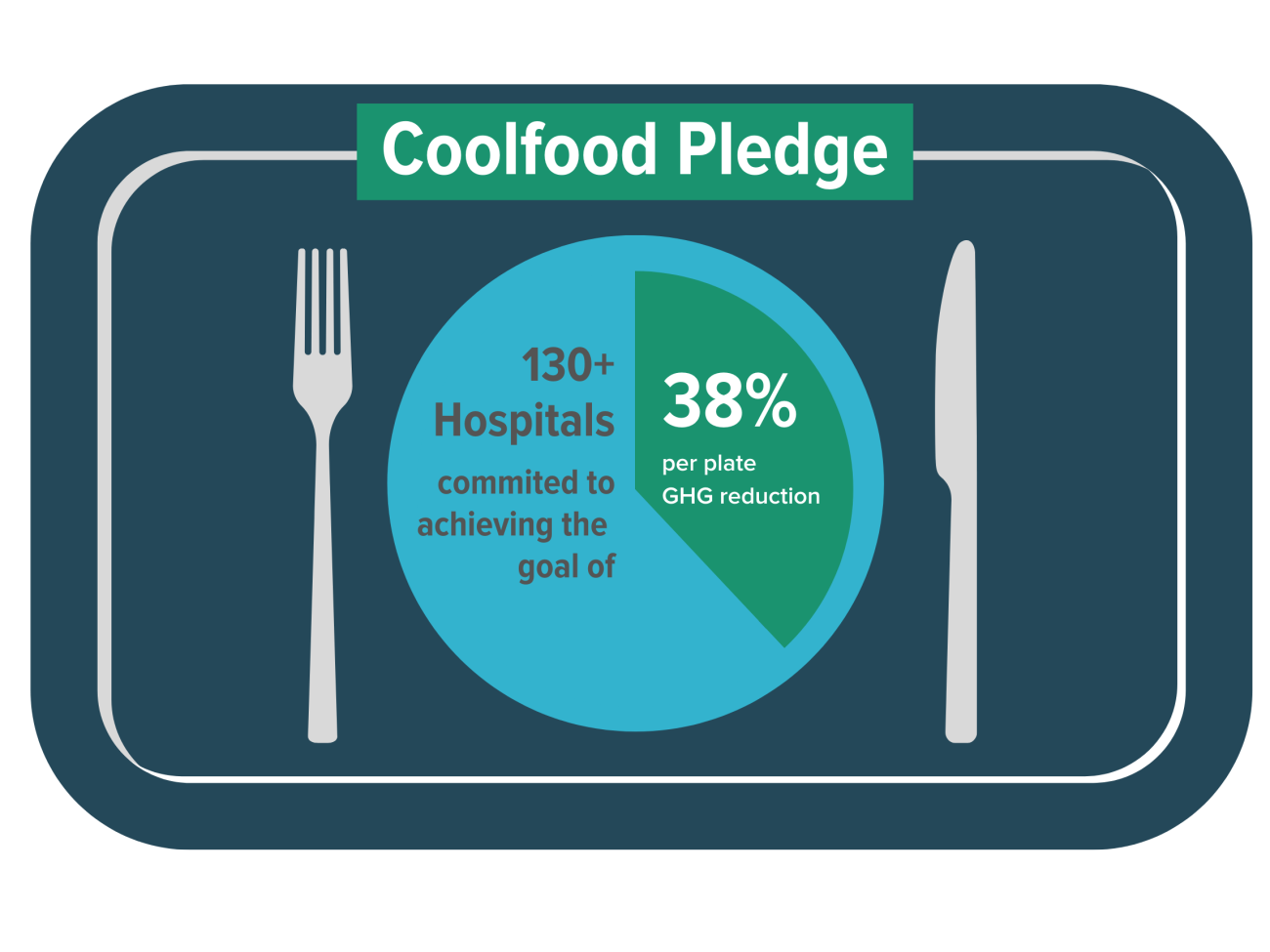
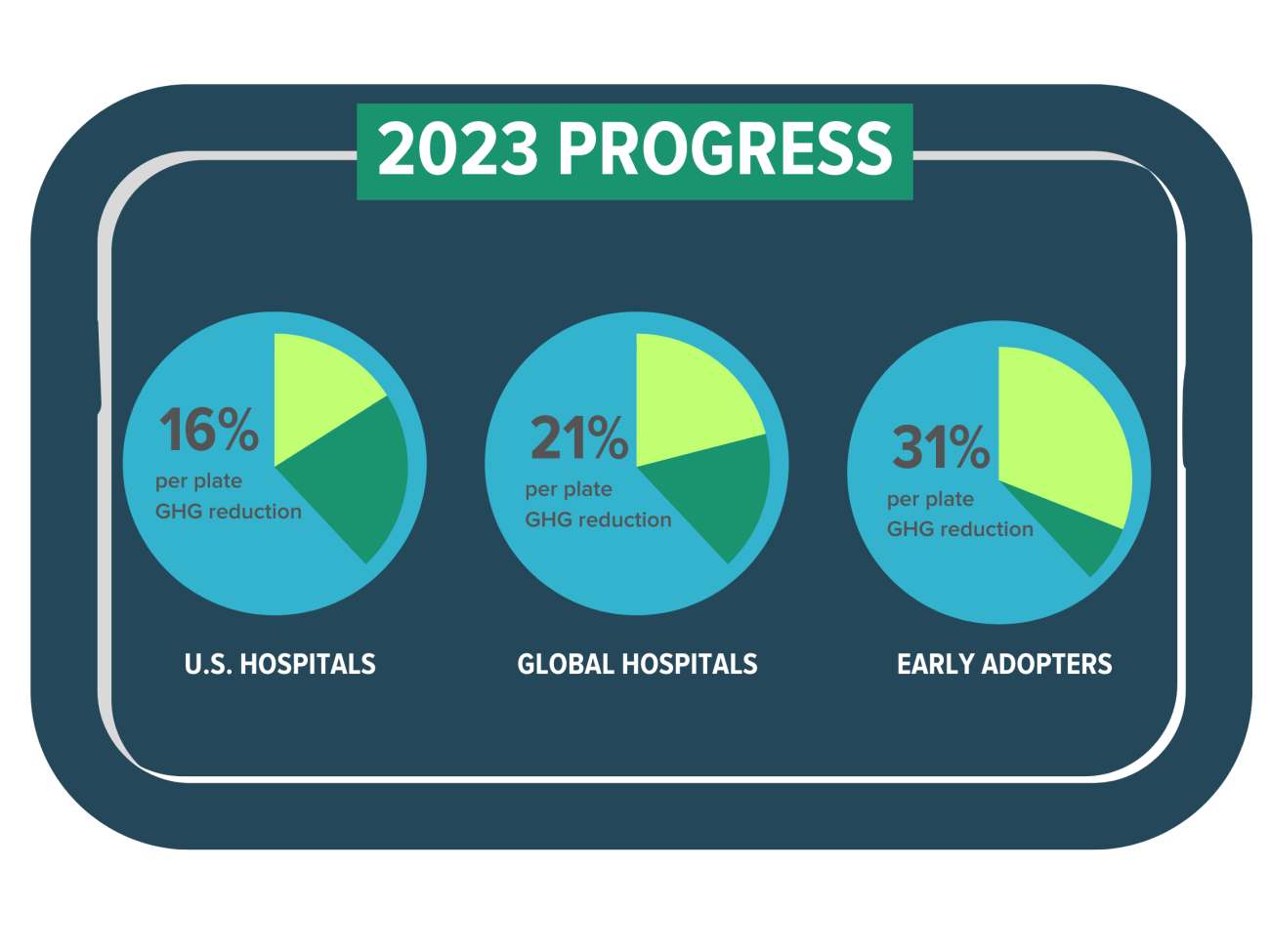
What makes the pledge so cool
Over 130 hospitals have signed the Coolfood Pledge – an international, cross-sector effort to achieve a science-based collective target of reducing GHG emissions from food by 25% by 2030 – or a 38% relative reduction in food-related GHG emissions per plate. Launched in 2018 with just four health care signatories, this year not only hits an impressive milestone with participation, but also marks that U.S. hospitals are about halfway to the goal with a 15.7% average reduction.
Signatories receive technical assistance from Practice Greenhealth, the leading sustainable health care organization delivering environmental solutions to more than 1,500 hospitals and health systems in the United States and Canada.
The pledge’s cross-sector work is championed by the World Resources Institute. Other sectors include government, private sector, and higher education with signatories including Hilton, Monde Nissin, and Morgan Stanley.
Start your Coolfood journey
Hospitals and health systems interested in joining the pledge are encouraged to visit Practice Green. For organizations in other sectors, visit coolfood.org for more information.
Coolfood superstars
These early signatories have achieved some impressive reductions.
UW Health
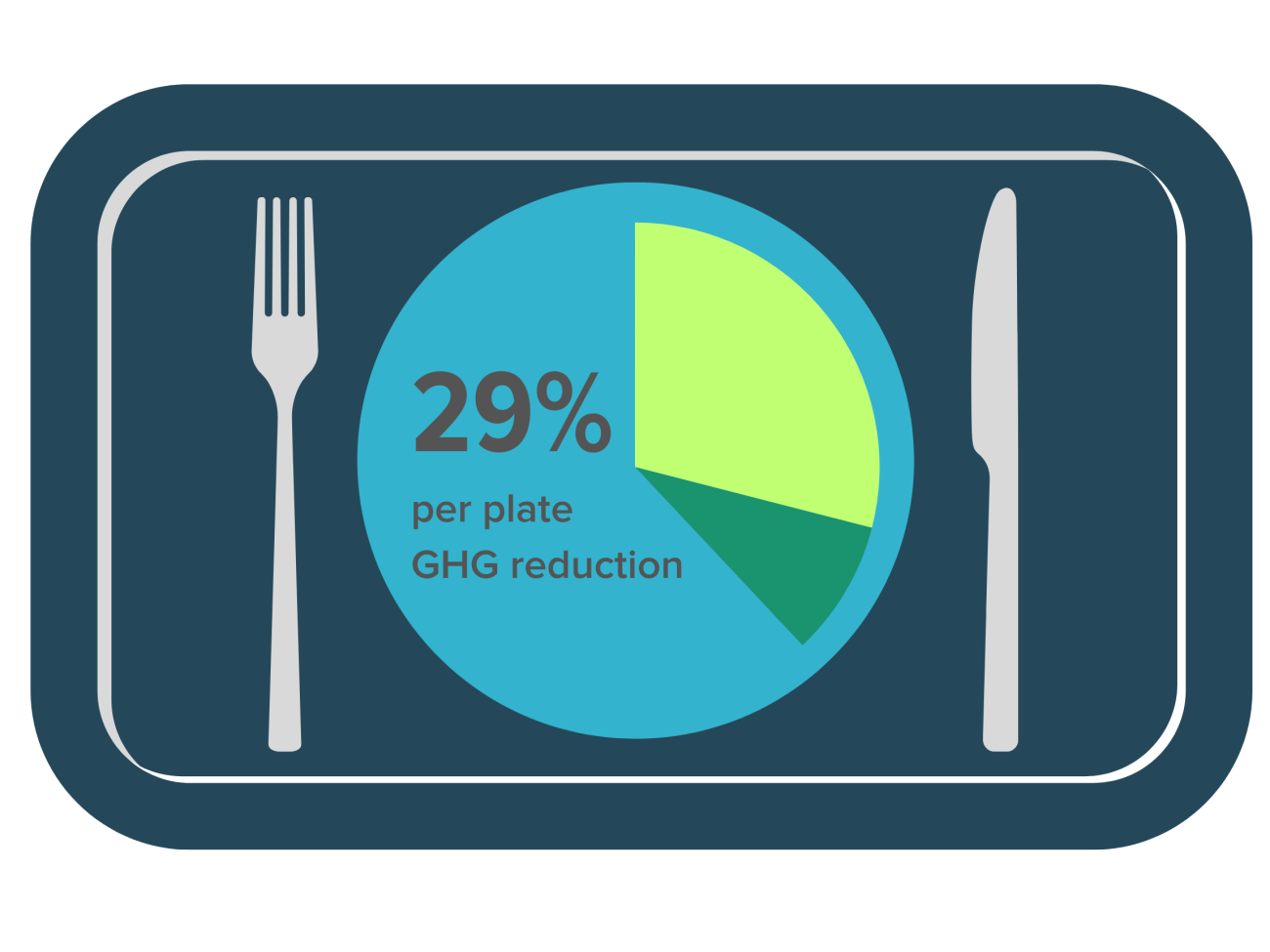
The 2021 winners of the Health Care Culinary Contest are on their way to becoming a whole new kind of champion. UW Health has achieved a 29% per plate GHG reduction and is only 9 points away from reaching the goal.
The Wisconsin health system has three hospitals that are Coolfood signatories and serve nearly 2 million meals each year. They credit their success to relaunching their food service after the pandemic with a focus on plant-forward meals.
The food service team reviews and edits recipes to decrease animal proteins while adding plant proteins, introduces culturally relevant foods, and strives to write creative and enticing recipe names.
Their original chicken noodle soup recipe, for example, was loaded with chicken – too much chicken. So, they decreased the chicken and added more vegetables and noodles. This was a positive change – they saw no impact on sales or customer feedback, and saw an improvement on their food spend.
“We took inspiration from and used resources provided by Practice Greenhealth, Health Care Without Harm, the World Resources Institute, and Coolfood to reopen it with a focus on plant-forward cuisine.” – Lisa Boté, manager of culinary services
UW Health 2021 Health Care Culinary Contest win was only the beginning for chefs Shekeba Samadzada and Dan Hess’ Afghan-style vegetable korma. The recipe continues to be popular among patrons and has even received press.
Overlook Medical Center
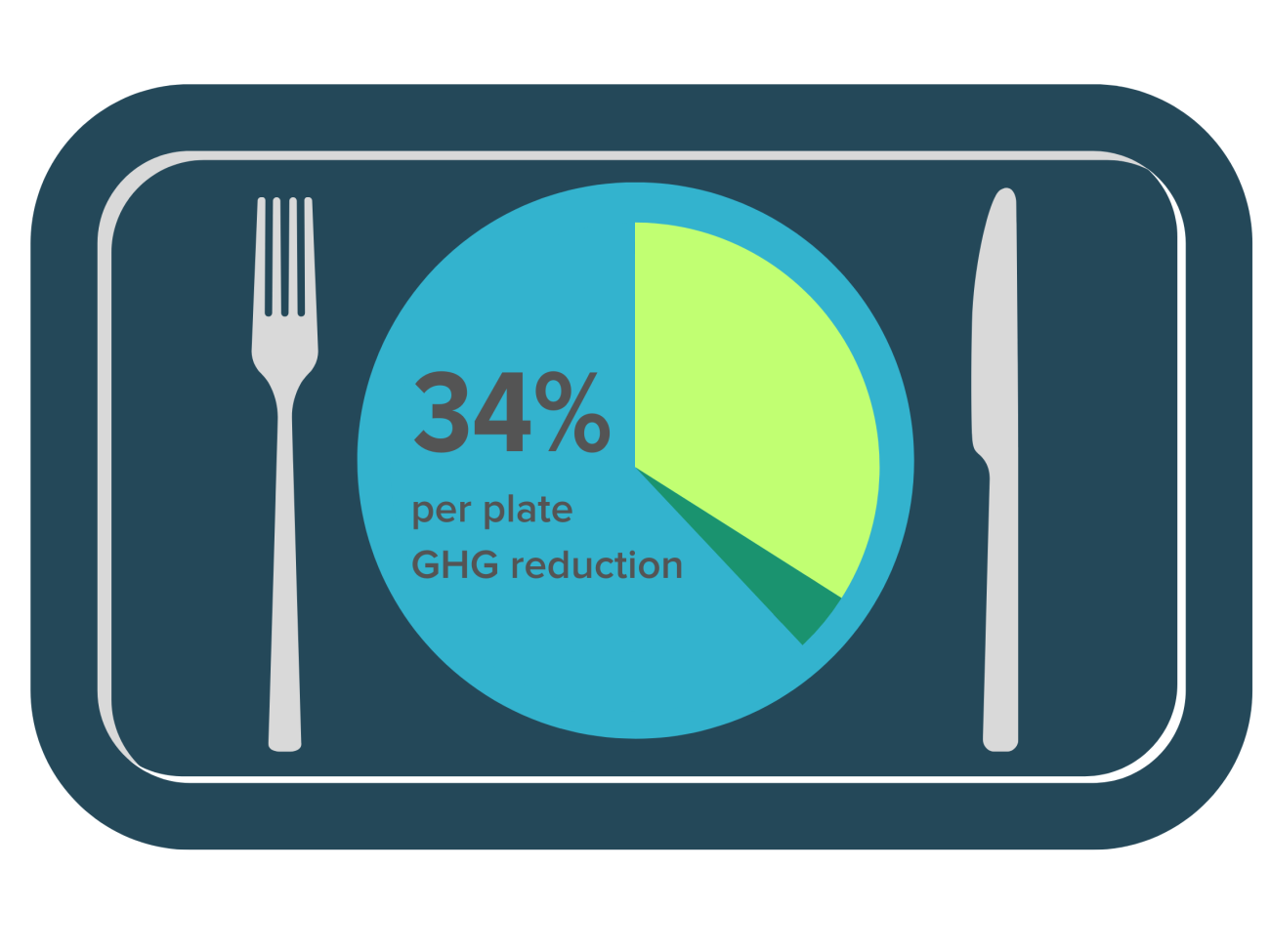
Overlook Medical Center in New Jersey signed the pledge in 2019 and has since achieved a 34% per plate GHG reduction, only 4 points away from the goal. They credit their success to the accountability of the Coolfood Pledge program and adding novelty to their menus to entice customers.
Overlook used strategies such as turning traditional meat dishes into vegetarian meals and using themes to promote recipes. During the Olympics, they ran specials using ancient grains from the countries that were competing.
Over the years they’ve unlocked the co-benefits of plant-forward menu strategies that go beyond sustainability, such as overall cost savings and educating and enticing patrons.
“The most important aspect of the pledge is that it offers resources and instills accountability to our sustainable goals. It provides targets to meet and resources in which to track hard numbers and results.” – Michael Atanasio, Overlook's former director of food and nutrition.

UC San Diego Health
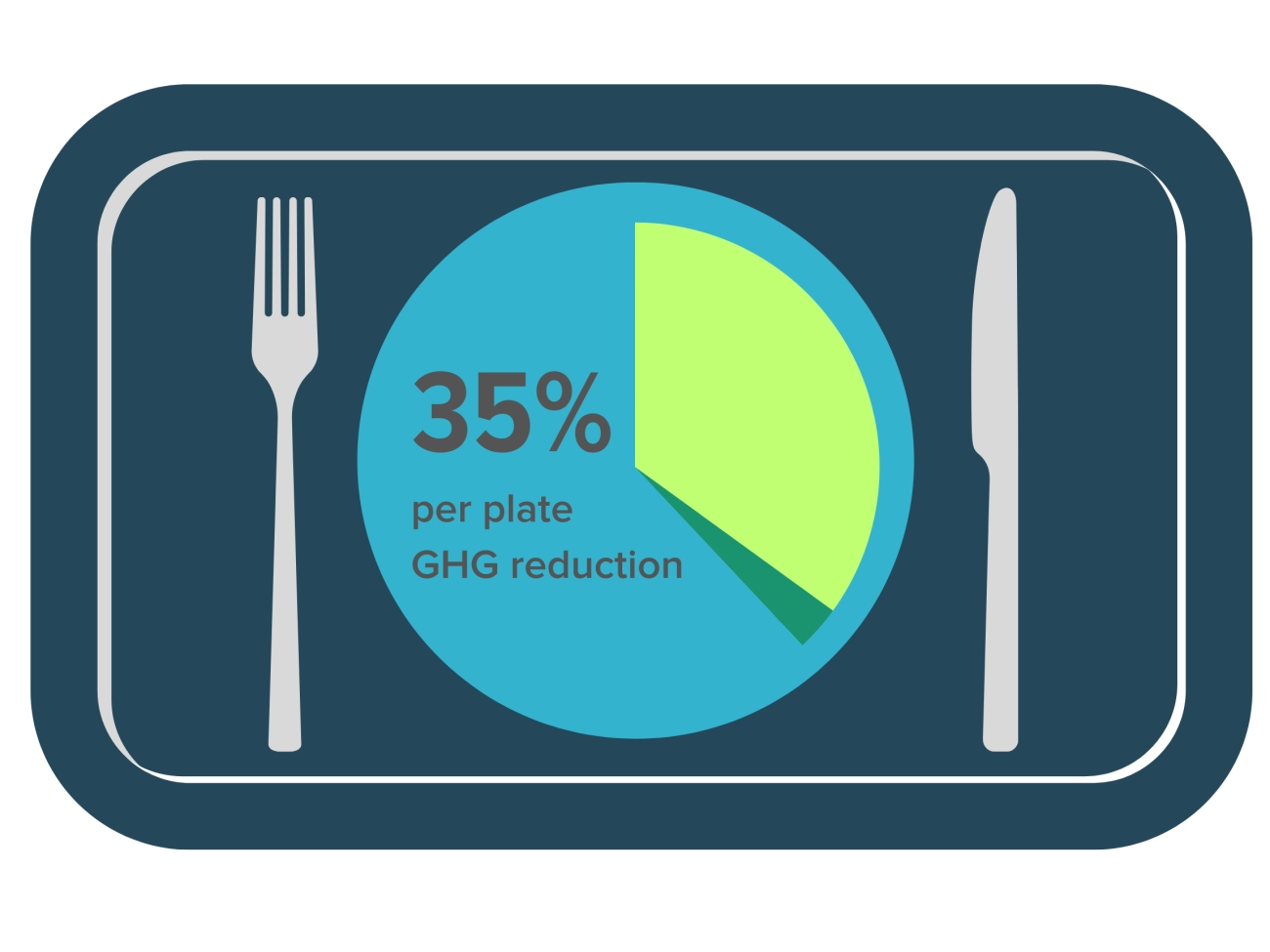
With only three points left toward the Coolfood goal, it’s no wonder that UC San Diego is featured in WRI’s most recent edition of the Coolfood Pledge playbook.
The California health system serves more than 1.4 million meals per year, and their Coolfood efforts are a huge part of their overall goal to achieve net-zero emissions.
They credit their success to stakeholder involvement at every level and transparent inclusive communication.
The food service team started with high-impact, low-risk actions and made incremental changes such as increasing the variety of plant-forward dishes, training staff, and eliciting the support of clinical colleagues.
“Our team shared information with staff about not only what we were doing but why. If you want buy-in from the people preparing and serving the items you’ve created, they need to be a part of it and support it. Frontline staff represent everything you’re trying to showcase. Without their support, you will lose momentum, and your patients and customers will not see the importance of the changes being made.” – Jill Martin, senior director of food and nutrition services.

Hackensack Meridian Health
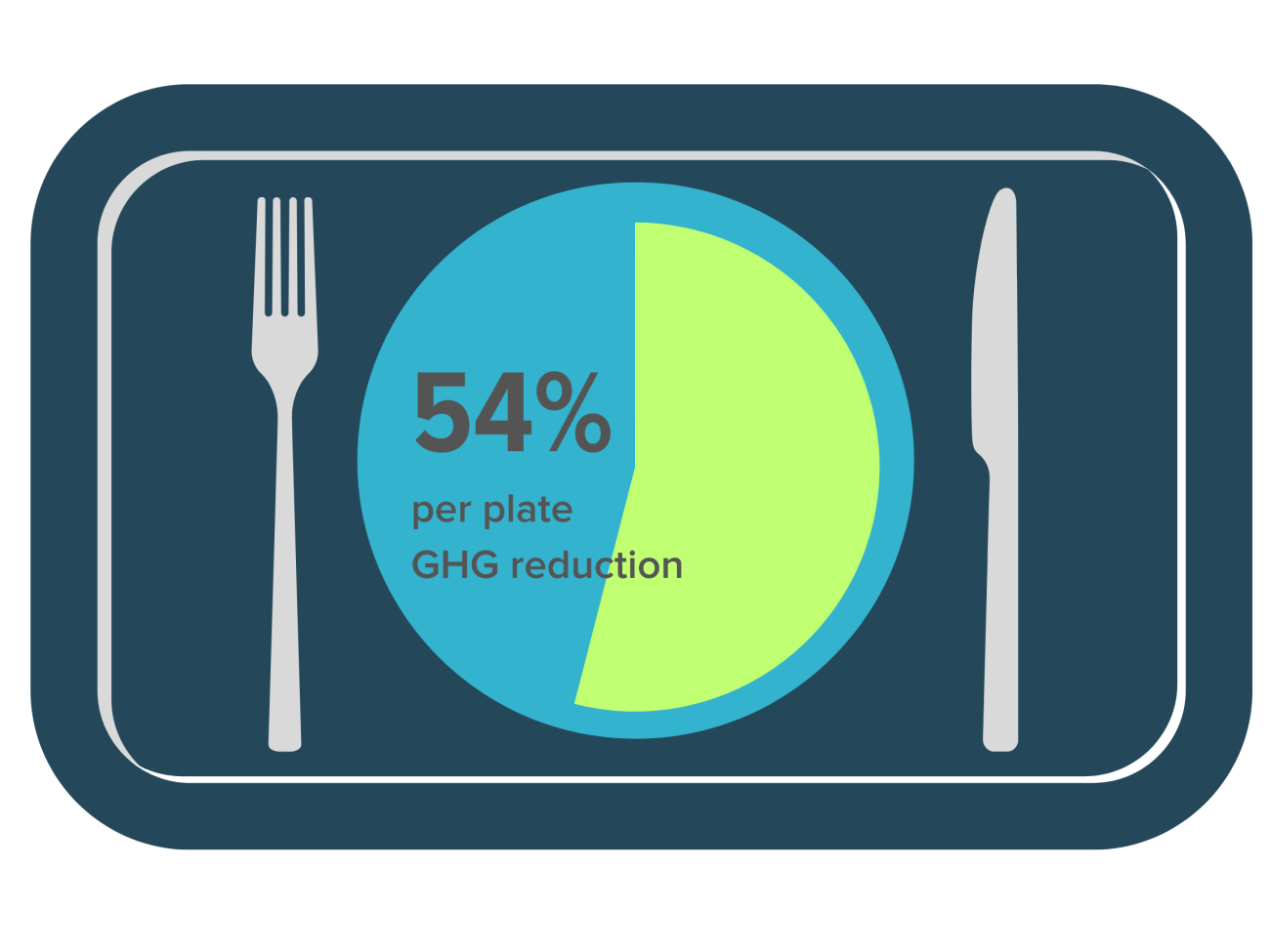
At a 54% per plate GHG reduction, Hackensack Meridian Health in New Jersey has not only achieved the Coolfood goal – but surpassed it by 16 points.
Hackensack, the largest and most comprehensive health care network in New Jersey, knows what strategies work most effectively for their patients, visitors, and team members – and has leveraged this knowledge to achieve such a significant impact. The health system has made the largest decrease from its baseline of all health care signatories.
When they joined the pledge in 2019, the health system was already working to reduce their climate impact via food purchasing.
The numbers and co-benefits realized by the health system – reaching formerly disinterested customers, increased sales, reduced costs, and significant GHG emissions reductions – are showing their investment was more than worth it.
“The Coolfood Pledge seemed like a great way to both promote what we were already doing and provide additional support to further our work.” – Kyle Tafuri, director of sustainability.

The next chapter for cool food
While we celebrate these champions for the progress they have made, we congratulate all hospitals that have made the commitment to Coolfood. There has been great progress from those who have been in Coolfood since the beginning, and we are excited to see what those who have joined us more recently will accomplish as their Coolfood journey unfolds.